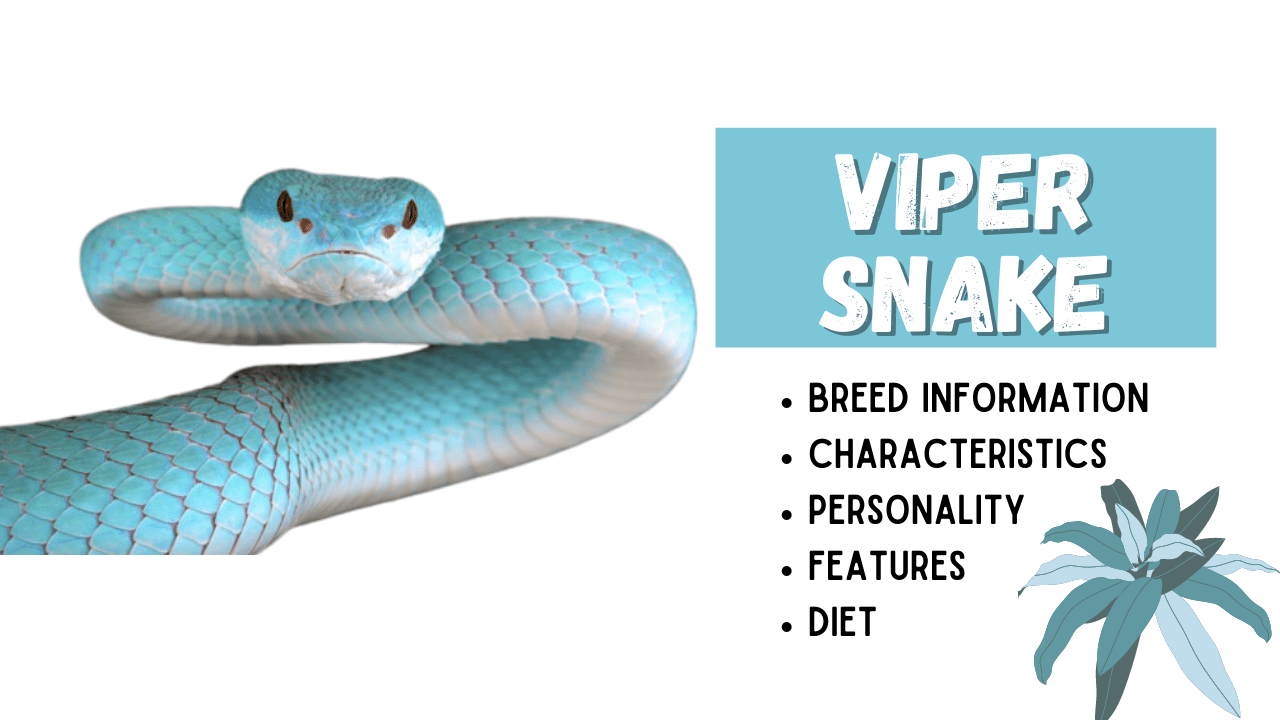
Viperidae, commonly known as a viper, is a snake family out of the 20 snake families. This family is easy to distinguish from other snake families for its distinctive features. There are more than 200 species in this family. The snakes of this Viperidae family are divided into 2 groups. Crotalinae and Viperidae. Some consider them as different families, but these are the sub-families of Viperidae.
Habitat of the Viper Snakes
Viper snakes belong to the venomous snake family that is found in almost all the parts of the world except the isolated islands like Antarctica, Arctic circle, Australia, Siberia, Ireland, Hawaii, and Madagascar. Most of the vipers are found in the hot tropical areas of the world. They are mainly found in fields, mountains, rainforests, and deserts.
Specific Physical Features
The Vipers have some distinct features that make them stand out differently from other snake families.
Size
The vipers are available in a variety of sizes, but generally, they are not very large. The smallest viper can be as long as 2 feet and the longest found viper was 11 feet long.
Head
The vipers have a triangular-shaped head that is the hallmark of the venomous snake families. This shape helps in the placement of the venom glands in the mouth.
Eyes
The vipers have elliptical and vertical pupils.
Skin
The skin of the vipers is distinctive. It has keeled scales and it has coloring and patterns that help the viper in serving a camouflage.
Fangs
It is a special feature of the venomous snakes like vipers. The fangs are long, hollow, rotatable, and hinged structures. These fangs remained folded up and lie against the mouth’s roof when not used. These fangs connect to the venom glands present behind the eyes at the upper back part of the jaw and bring down venom when it is prepared to attack and inject venom.
Vipers often use dry bites for humans without venom. It helps to conserve their venom for the worst time. Because once used, it takes time to reproduce venom.
Venom
Venom is the most important feature of the venomous snakes like vipers. This venom is present in the form of venom glands situated behind the eyes, at the back upper part of the jaws.
The vipers use venom to kill their prey and injure the predators by biting or stabbing through their fangs. The venom changes the blood of its prey or predator into a jelly-like substance and also disrupts the system of blood clotting. The venom also helps vipers to digest their prey as it contains proteases, the protein degrading enzymes in it and helps in breaking lipids, acids, and proteins in the prey.
The venom also helps vipers to locate their prey after stabbing or injecting venom. They can smell their venom and thus locate if their prey has got hidden somewhere. It is known as ‘prey relocalization’.
Types of Vipers
There are a lot of species of Vipers. Some of the amazing viper species are discussed below.
Gaboon Vipers
Gaboon vipers are known as the largest vipers in the family. They are 7 feet long and weigh about 22 pounds. Many snakes may be longer than Gaboons but Gaboons are the heaviest.
Gaboon vipers are mostly found in the rainforests of sub-Saharan Africa and some other tropical areas. They spend most of their time hiding in the leaves waiting for the prey. They eat small mammals, rats, birds, and amphibians.
Significant Feature
Gaboon vipers are famous for having the longest fangs of about 2 inches long which contain potent venom.
Pit Vipers
Pit vipers belong to a subfamily of Viperidae, Crotalinae. It has around 190 species mostly found in Asia, Europe, and America. All the vipers in America are pit vipers.
Some of the famous species of pit vipers are rattlesnakes, lanceheads, cottonmouths, copperheads, and bushmasters.
Significant Feature
The Pit vipers are famous for their pit organs found near their nostrils. These are the heat-sensing organs that can detect the infrared rays emitted by the warm-blooded animals.
Horned Vipers
Horned vipers are usually found in Africa, the Middle East, Asia, and Europe. They are found in yellowish, pale grey, pinkish, reddish or pale brown colors that help them to camouflage with the ground color. Semi-rectangular blotches are found on their body.
Some of the famous species of Horned vipers are Cerastes cerastes, Cerastes gasperettii, and Bitis caudalis.
Significant Feature
Horned vipers are famous for having horns-shaped structures on their head. Sometimes, these horns are above the eyes and sometimes, one horn appears above the nose like Vipera ammodytes. The horns are made of single or multiple scales. The purpose of horns is said to protect the snake’s eyes from desert sand.
Green Vipers
The Green vipers are the species of viper family with green coloring. The green vipers are mostly found in Asia and Africa. These vipers spend their lives hanging from the tress with gree leaves and branches in the wait of their prey. With bright Kelly green color, they have vivid yellowish eyes and white or yellow jaws.
Common species of Green vipers are Trimeresurus stejnegeri, Causus resimus, Atheris nitschei, and Cryptelytrops rubeus.
Significant Feature
The green coloring is the special feature of green vipers. It helps them to camouflage in the green leaves and branches of the tress and become invisible to the prey.
Eye-lash Pit Vipers
Eye-lash pit vipers are the smallest venomous snakes with 2 feet length. These are the arboreal snakes that live their whole life in the trees. They are mostly found in Central and northern South America.
They have vibrant colors like pink, purple, green, yellow, silver, dark gray, or brown that work as a camouflage in the trees and flowers.
Significant Feature
The eye-lash pit vipers got their name due to an eye-lash like scaly-structure present right above their eyes. These scales might protect their eyes from thorns in the thick vegetation.
Behavior and Habits
The Vipers appear to have cunning, sluggish, and nocturnal behavior. They are more active at night and rely on camouflage rather than their speed. They won’t slither away on approaching a predator. They will try to hide in a nearby bush, rock, or ground with their ability to camouflage. Their skin and coloring support them well in this matter.
However, they have a very quick strike. They can strike, bite, or stab their prey or predator at a speed of as fast as the quarter of a second.
The vipers do not keep running in search of prey. They stay and wait at the expected place of the prey. When the prey comes near to them, they strike, stab or bite the prey, inject venom, and wait for it to die. When the prey is dead, they swallow it as a whole.
The vipers swallow the prey according to their size. They mostly eat, rats, lizards, eggs, small mammals, and birds.
Reproduction
Most of the vipers are the ovoviviparous snakes. It means that they give birth to live young. The eggs are not laid by the female and they hatch inside its body and then it gives birth to live young. Some pit vipers are also known to lay eggs.
Final Words
The Vipers are highly dangerous, poisonous, and fatal snakes, they are wild and must be kept at wild places under the control of experienced handlers. They might seem amazing and exciting but they are a great danger for life.







